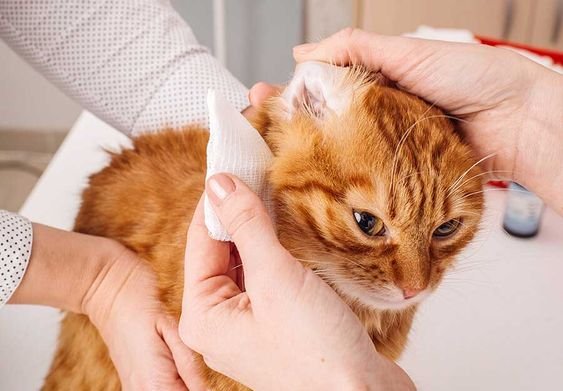Understanding Cats and Ear Wax: Causes, Symptoms, and Care
Cats are meticulous groomers, but sometimes, they may experience ear wax buildup, just like humans. Ear wax, also known as cerumen, is a natural substance produced by the body to protect the ears from dirt and debris. However, excessive ear wax can lead to discomfort and potential health issues in cats. In this article, we’ll explore the causes of ear wax buildup in cats, common symptoms to look out for, and how to care for your feline friend’s ears to ensure their optimal ear health.
1. Normal Ear Wax in Cats
Ear wax is a normal and essential part of a cat’s ear health. It helps trap dust and foreign particles, preventing them from reaching the delicate inner ear structures. In healthy cats, ear wax is usually light brown or yellowish and doesn’t cause any issues.
2. Causes of Excessive Ear Wax in Cats
Excessive ear wax in cats can occur due to various reasons, including:
- Ear Mite Infestation: Ear mites are tiny parasites that can lead to excessive wax production and irritation in a cat’s ears.
- Ear Infections: Bacterial or yeast infections can cause inflammation and an increase in ear wax production.
- Allergies: Cats with allergies may experience increased ear wax as a response to the allergens.
- Foreign Objects: Sometimes, foreign objects can get trapped in a cat’s ear, leading to increased wax production.
- Breed Predisposition: Certain cat breeds are more prone to ear wax buildup than others.
3. Common Symptoms of Ear Wax Issues
If your cat is experiencing excessive ear wax or related issues, you may observe the following symptoms:
- Frequent ear scratching or rubbing
- Head shaking or tilting
- Redness or swelling of the ear canal
- Unpleasant odor from the ears
- Discharge or dark, thick ear wax visible in the ear canal
- Hearing loss or sensitivity to touch around the ears
4. Ear Care for Cats
To ensure proper ear health for your cat, regular ear cleaning and maintenance are essential. However, it’s crucial to approach ear cleaning with care, as the ear canal is sensitive. Here are some tips for cat ear care:
- Consult a Veterinarian: If you suspect an issue with your cat’s ears or notice any concerning symptoms, it’s best to seek advice from a veterinarian. They can examine your cat’s ears, diagnose any problems, and recommend appropriate treatment.
- Regular Grooming: Regular grooming and keeping your cat’s fur clean can help prevent dirt and debris from accumulating in the ears.
- Gentle Cleaning: If your veterinarian recommends ear cleaning, use a veterinarian-approved ear cleaner and follow their instructions carefully. Use a gentle touch and avoid inserting cotton swabs deep into the ear canal, as it can cause damage.
5. Preventive Measures
To prevent excessive ear wax buildup in cats, consider the following preventive measures:
- Regular Vet Checkups: Regular veterinary checkups can help detect any ear issues early and address them promptly.
- Allergy Management: If your cat has allergies, work with your veterinarian to manage them effectively.
- Keep the Environment Clean: Regularly clean your cat’s living space and remove any potential irritants that could affect their ears.
While ear wax is a normal part of a cat’s ear health, excessive buildup can lead to discomfort and potential health issues. Observing your cat’s ears for any concerning symptoms and seeking veterinary care when necessary will ensure their optimal ear health. By providing gentle ear care and maintaining a clean living environment, you can help your feline friend enjoy healthy and happy ears for a lifetime.


